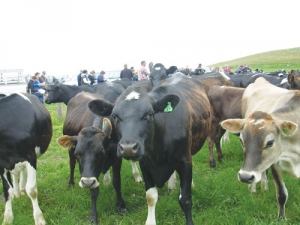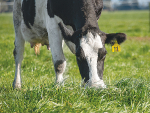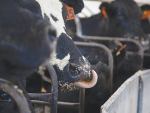The first two weeks of milking will go better if heifers are trained prior to calving, starting with walking to the dairy yard and holding them briefly, then building up to turning on machines and walking them through the dairy. Teat spray at this time.
Using an internal teat sealant on heifers can also familiarise them with the dairy and yards four-six weeks before calving.
Take your time moving animals into the farm dairy: don’t rush because this minimises injury to udders and teats, and helps cows get comfortable during milking. Encourage the cow by gentle handling. Don’t rush, a calm cow is a productive cow.
Unexpected noise and movement scare cows, and they will not let down their milk. Tell staff to follow a calm, consistent routine when handling stock.
Ensure all quarters of all cows are milked out. Ensure each cow has a milk let-down at each milking, particularly heifers. Use let-down hormone (Oxytocin) if necessary.











